Coaching implications of the lateral batting back lift technique in men’s cricket: A discussion and food for thought

Abstract
Cricket coaching manuals published after 2009 accept as a norm for batsmen to lift the bat in the direction of the slips. A mixed-methods study conducted among 161 coaches around the world showed that most cricket coaches (83%) coach the straight batting back lift technique (SBBT) as opposed to the lateral batting back lift technique (LBBT) at various proficiency levels of the game.
The LBBT (more beneficial for cricket batsmen) is one in which the bat is lifted laterally in the direction of second slip or gully. Using this technique, the face of the bat faces towards point or the offside. In contrast, the back lift in which the bat is lifted towards the stumps or first slip and the face of the bat points towards the wicketkeeper or the ground, is known as the SBBT. This Article attempts to provide implications for coaching the LBBT and understanding some important aspects of cricket batsmanship in men’s cricket.
Introduction
The batting back lift technique (BBT) in cricket is a key contributor to successful batsmanship for batsmen at all levels of cricket ability. It is common knowledge today for coaches and scientists to be aware that elite cricketers do not play the way most coaching manuals have
instructed to. Modern coaching manuals published after 2009 describe as a norm that
batsmen can lift the bat in the direction of the slips. A mixed-methods study conducted among 161 coaches around the world showed that most cricket coaches (83%) coach the straight batting back lift technique (SBBT) as opposed to the lateral batting back lift technique (LBBT) at various proficiency levels of the game. The LBBT is one in which the bat is lifted laterally in the direction of second slip or gully. Using this technique, the face of the bat faces towards point or the offside. In contrast, the back lift in which the bat is lifted towards the stumps or first slip and the face of the bat points towards the wicketkeeper or the ground, is known as the SBBT.
We attempt to provide implications for coaching the back lift and understanding some important aspects of cricket batsman-ship. However, it is important to understand the body segments and movements involved for executing a successful back lift. Although women’s cricket has expanded, this article will focus on the back lift of men’s cricket.
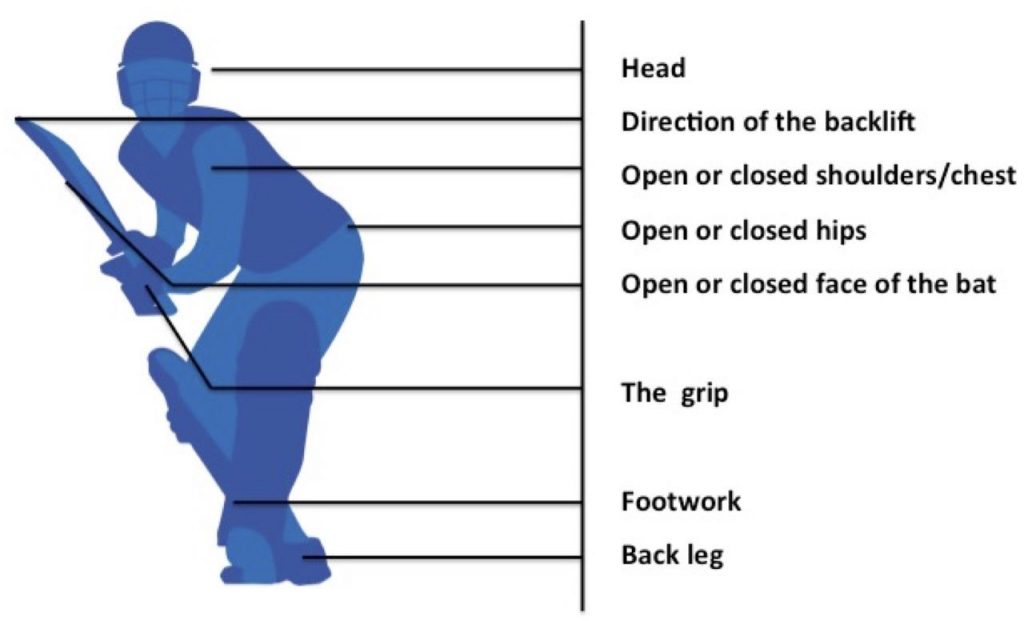
A conceptualised body segment model for the
batting backlift techniqueA conceptualised body segment model for
Figure 1 illustrates body segments that work collaboratively with the back lift.
Differentiating between the backlift and
backswing in cricket
A conceptualised body segment model for the batting back lift technique
A conceptualised body segment model for the batting technique in cricket should beused when coaching batsmen (figure 1). This can assist in preventing coaches fromfocusing on just one or two components of the batting technique. Example: players mayhave a LBBT; however, focus should also be drawn towards their head and feet.
Differentiating between the back lift and backswing in cricket
The back lift and backswing of the bat in cricket have often been used interchange-ably. Elaborating on the use of the SBBT, some players display two distinct movements prior to making impact with the ball. Figure 2 shows that some batsmen display ‘two back-lifts’ in the time between the release of the ball by the bowler and the ball reaching about mid-way along the pitch. It can, therefore, be better understood that the back lift is what happening in the batsman’s backlift before the ball is released and the backswing describes what happens from that moment until the ball is mid way down the pitch. Instead of ‘two back-lifts’, certain batsmen only have ‘one back lift’, which either means that they are late on the ball or picking up the trajectory of the delivery quicker.

In order to pick up the trajectory of the ball a lot better, some batsmen keep low and kneel while adopting a high back lift just before playing the ball (figure 2). This has shown to be effective for some of the greatest batsmen (Brian Lara, Chris Gayle, AB de Villiers, Virat Kohli, Yuvraj Singh, Ricky Ponting and Sourav Ganguly) because it would be more challenging for batsmen to pick up the trajectory of the delivery at the same eye-level, especially if bowlers are not too tall. As a consequence, their eye level or eye dominance can also have an effect on their batting technique. This poses another interesting question: do batsmen with a LBBT time the ball better and are they able to pick up the trajectory of the ball earlier than those batsmen who adopt the SBBT? Further research is required in this aspect. However, if batsmen get into their back-lift position already by position, then they would have adequate time to prepare for the ball, initiate the backswing and play the ball.
The use of the coaching cricket bat to hit the ball more effectively
From a motor control and learning perspective, repetitive practice and learning over a period can enhance training that subsequently improves performance

Throwing a ball against a circular or spherical surface makes the ball bounce back in an unintended position, which makes a player prepare for the ball in less time that allows adaptation and a quicker response. In addition to enhanced hand-eye-coordination, hitting the ball with a smaller and thinner object with a less surface area (i.e.a stump) repetitively can assist a player when they use a conventional bat in cricket matches. To eliminate any confusion or contraindications between the use of the coaching cricket bat and the stump, the distinct objectives of these approaches are explained below:
- The coaching cricket bat assists young cricket players in the development of a LBBT and to hit the ball more effectively and with power.
2. A stump to hit the ball against a spherical surface helps to assist young cricket players in the development of advanced motor control (hand-eye-coordination, spa-tial awareness and response time) Sir Donald Bradman (Figure 3) used to hit a golf ball
against a spherical surface in his backyard. This possibly explains why his looped action was so distinctive and why he was so effective when compared to other batsmen. Therefore, the motivation behind this coaching drill comes from the exercise thatBradman had performed when he trained
Coaching the lateral batting back lift technique to a young cricket player
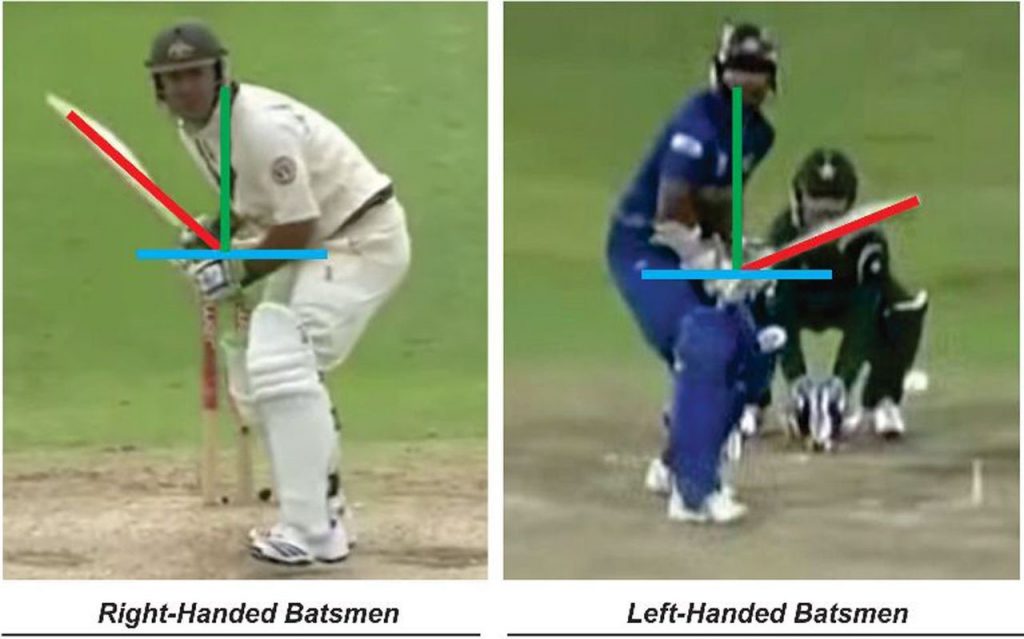
Bat with an open face of the bat and not closing the face
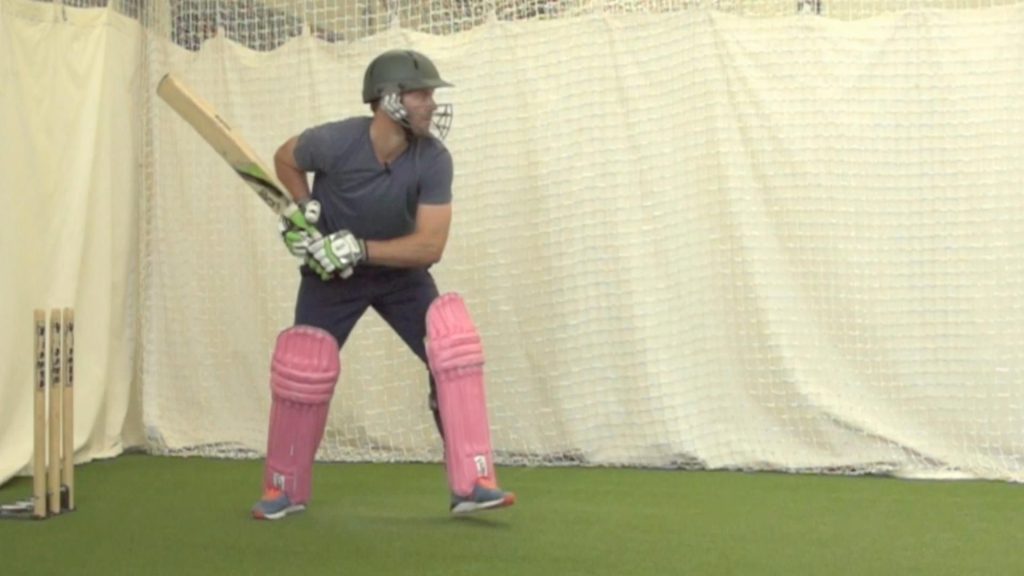
An open face of the bat is also categorised as a LBBT, which means that batsmen will be more successful if they use an open face of the bat.
Young cricket players should visualise that they are playing ‘tennis’
Young cricket players should visualise that they are playing tennis
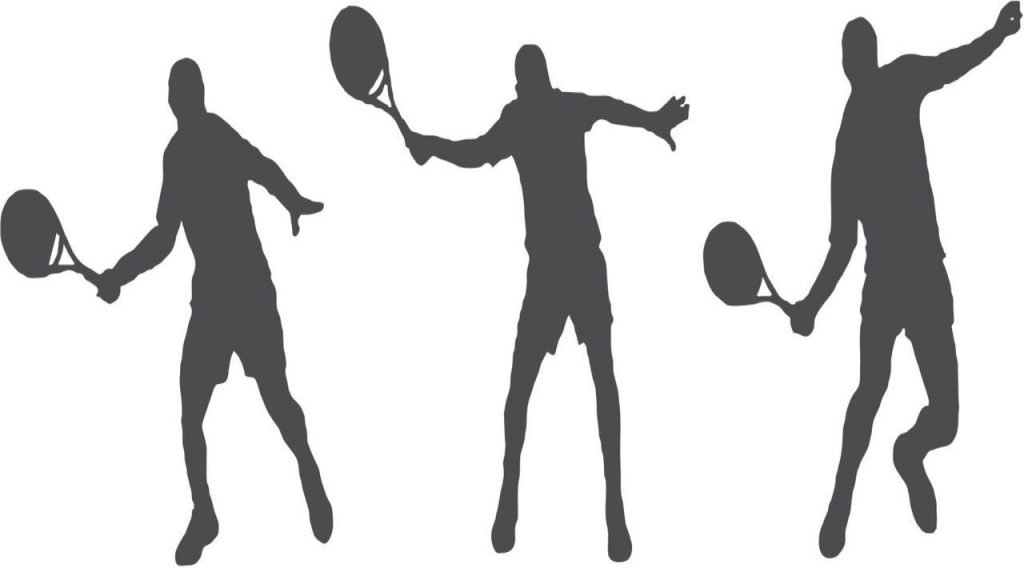
The emphasis of hitting a ball in cricket batting can be compared with other bat sports such as baseball, golf, and tennis. Tennis is one of the sports that compliments the loop in the back lift that makes a forehand shot more lateral as opposed to a baseball hit which produces more horizontal displacement. As such, the mindset of a sports player is crucial in assisting them to focus on the task at hand, that is, hitting the ball (figure 7).
Smilarly in cricket, tennis also requires players to move either on the back or front foot to anticipate and hit the ball depending on the bounce, height, and speed of the incoming ball. From this observation, coaches are advised to encourage young cricket players to play tennis and to also allow them to visualise playing tennis in the nets (holding the cricket bat with two hands). The idea of this approach would be to reduce the passivity of the player and encourage the player to hit the ball better instead of leaving the ball or defending it (even though a solid defensive stroke is integral for staying at the crease
longer). In tennis, players tend to approach an incoming ball. Similarly, in modern day cricket, players such as AB de Villiers and Virat Kohli approach the oncoming delivery (for certain deliveries in limited overs cricket) instead of passively waiting for the ball to arrive.
Foot work and shoulders of a batsman

One needs to also pay attention to the footwork and the positioning of the shoulders (both either being open or closed) of a batsman. Generally, if a batsman has an
open stance at the crease with their feet open then it is most likely that their shoulders will also be open. Great batsmen such as Shivnarine Chanderpaul, Kevin Pietersen, Herschelle Gibbs, Gary Kirsten, Younis Khan and Virender Sehwag had an open stance at the crease for most of their careers. Batsmen who have an open stance at the crease will most likely also have a LBBT. One can then draw a straight line from second slip to the batsman’s front foot, which means that it would be mechanically impossible for batsmen to still adopt a SBBT by having an open stance at the crease. In order for an open stance to be successful, a batsman would also need to have a stable back leg (the batsman’s leg that is closer to the wickets on the inside of the crease) and a minimum shuffle (limited movement of a batsman) across the crease
Back leg and shuffling across

The shuffle allows batsmen to lift their bats more laterally as it would be an uncomfortable position for batsmen to lift their bats in the direction of the stumps or the wick-et-keeper while moving (figure 9). This works in the favour of some unorthodox batsmen such as Shivnarine Chanderpaul as well as technically correct batsmen such as Jacques Kallis when he adapted to limited overs cricket. However, many batsmen shuffle and then freeze at the point of delivery, which causes them to either miss the ball or compromise their wicket. The recommendation here is that batsmen should follow through with their shuffle (if they intend on shuffling across) and play at the ball. An adequate example of how a complete shuffle should be executed is Hashim Amla, whereby he did not start his career as a very aggressive batsman. In order for him to score at a rapid rate during one day cricket, there was a time towards the middle stages of his career where he shuffled across and whipped the ball from outside off-stump through the on-side which was his strongest scoring area.
In addition, the back leg at the crease is key and should almost be treated as a ‘statue’ with fast bowlers. Many batsmen rotate or invert their back leg onto their toes which adversely affects their hips to rotate which makes the batsman compromise the required shot played or execution of shot played. This area of the back leg among batsmen also requires further research
The grip

In addition to the feet, hips and shoulder, there should be a particular emphasis on the grip for batsmen in accordance with the back lift. Minimising the attention towards the grip is similar to the analogy of the motor car of not having clutch control before driving a car.
A grip is the clutch of a batsman, the feet are the gears and the bat (back lift, downswing and impact) is the accelerator. Traditionally, the ‘V’ grip allows a batsman to lift the bat straight back. However, an adjusted grip in which the ‘V’ is rotated towards 10:00 am on the posterior aspect of the bat, would allow a batsman to lift the bat in a more lateral direction without having to compensate for having an open face of the bat (figure 11).
Players such as Eoin Morgan from England have an ‘O’ grip
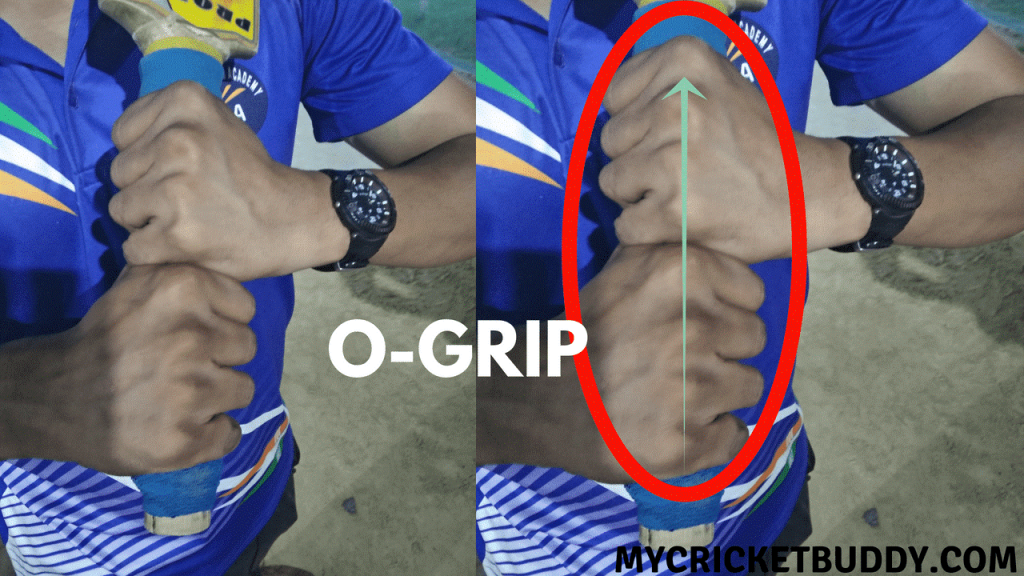
The fingers completely around the handle) which would make it difficult to hit the ball with power. Once again, and similar to the shuffle across with some batsmen, batsmen would need to compensate with the rest of their body segments if their bottom hand is quite rigid as opposed to the top hand needing to be rigid and the bottom hand to be loose or most of the time being held with two fingers (index finger and thumb) (figure 12). The grip and hand placements on the bat would also change. In order to train a young player to execute a LBBT, their bottom hand should be looser and more open on the bat. Their top hand should be more rigid in order to provide support and power as well as to stabilise the bottom hand in order to prevent the batsman from scooping the ball and being at risk for getting caught out.
pinion and speculation
Playing devil’s advocate—why have some top batsmen been
successful with a straight batting backlift technique?
Opinion and speculation
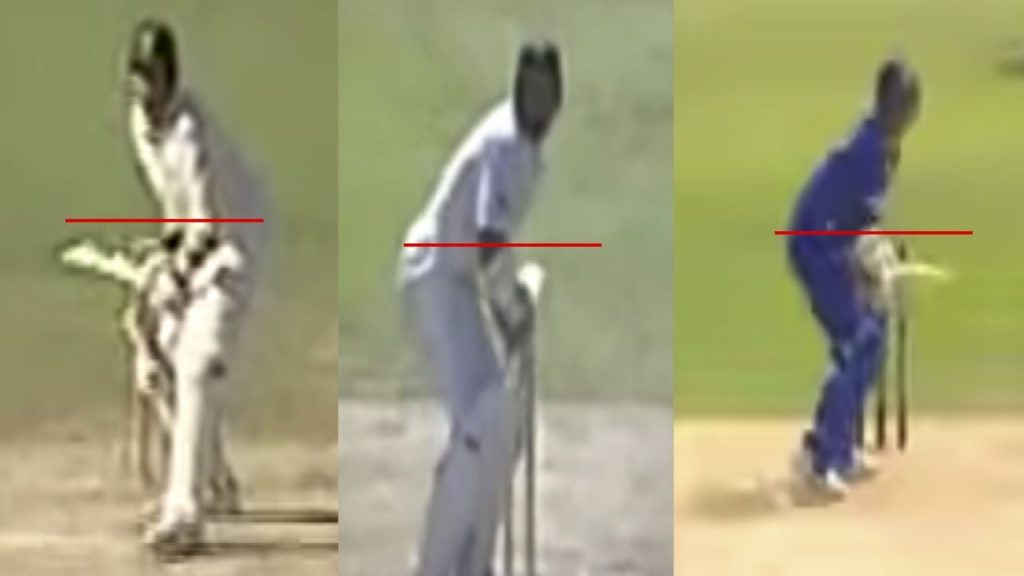
Playing devil’s advocate—why have some top batsmen been successful with a straight batting back lift technique? Despite the contributing factor that the LBBT has been for most successful batsmen, an interesting question is: why have some batsmen been successful with a SBBT? Examples of such batsmen are Jacques Kallis Figure 13, Graeme Smith Figure 14 and Sanath Jayasuriya Figure 15. In this subsection, we speculate as to why each of these players were successful without using a LBBT
Jacques Kallis Jacques Kallis has been defined as being technically correct in his batting technique (as used in Bob Woolmer’s 2009 Art and Science of Cricket) (figure 13).
He notably struggled in his early career and towards the middle stages of his career, adopted a trigger movement (movements batsmen make just prior to the bowler releasing the ball) prior to playing the ball. This shows that batsmen without a LBBT may have to compensate in other areas of their batting technique to score runs. This may be a disadvantage to the batsman, but in Kallis’s case, why was he still able to be successful? Possible reasons could be due to his strong temperament, efficient footwork, and balance at the crease. Towards the end of his career, Kallis moved towards using a more open face of the bat due to the advancements of the one-day game and the need to adapt to scoring at rapid rates.
Graeme Smith Graeme Smith was a strong batsman, particularly through the on-side. We believe his factors for success were also his strong eye and balance at the crease (figure 14). However, a SBBT and a wide-closed stance at the crease with a rigid grip made him a likely candidate for an inside-edge dismissal or for leg-before-wicket dismissals. In addition, he struggled with deliveries outside off swinging away from him (just as with most other lefthanded batsmen). Furthermore, Smith did not use his height to his advantage like other great batsmen with a tall stature (such as Graeme Pollock and Chris Gayle, who were also left-handed batsmen). Sanath Jayasuriya Sanath Jayasuriya was one of those batsmen who used his shorter stature to his advantage (figure 15). Despite his SBBT, he was still able to get behind most of the short deliveries and proved to be a prolific player with the pull and cut shots (cross-bat shots). His open stance at the crease also provided him with room to manoeuvre the ball around the field. These three world-class players show that each player may have unique reasons explaining why they were successful
Summary of the practical recommendations and implications
Integrating our research and practical expertise, we make the following ‘expert opinion’ suggestions. The BBT should not be coached or taught in isolation and, therefore, all accompanying segments outlined above should be adhered to when coaching a player.
As such, the conceptualised body segment model for the BBT is a novel approach that coaches, scientists and players can apply in their respective methods when coaching the back lift and overall batting technique in cricket.
Innovative coaching tools (specifically for the back lift), in the form of a coaching cricket bat and a mobile application, are also available for coaches and players to improve and assist with the coaching of the LBBT.



